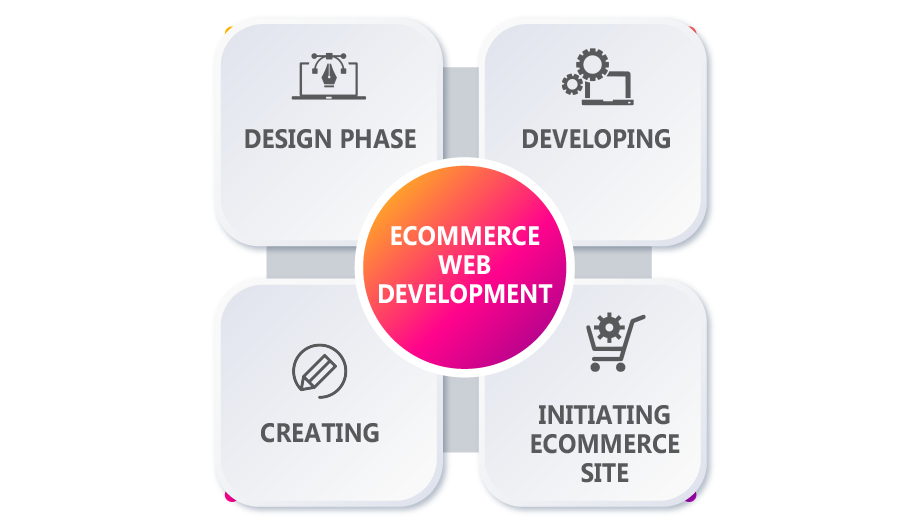The retail industry has undergone a seismic transformation in recent decades, driven primarily by the advent and rapid growth of e-commerce. Traditional brick-and-mortar stores are no longer the sole players in the retail game; online shopping has become an integral part of our consumer culture.
This digital revolution has not only reshaped the way we shop but has also brought about significant changes in the retail industry as a whole. In this blog, we will explore how e-commerce has revolutionized the retail industry.
Contents
- 1 1. Accessibility and Convenience
- 2 2. Global Reach
- 3 3. Diverse Product Offerings
- 4 4. Personalized and Recommendations
- 5 5. Cost-Efficiency
- 6 6. 24/7 Accessibility
- 7 7. Customer Reviews and Trust
- 8 8. Seamless Payment and Security
- 9 9. Inventory Management and Analytics
- 10 10. The Rise of Mobile Commerce
- 11 11. Reduced Overheads
- 12 Conclusion
- 13 Frequently Asked Questions (FAQs)
1. Accessibility and Convenience
One of the most significant ways e-commerce has revolutionized retail is by making shopping more accessible and convenient than ever before. With just a few clicks or taps, consumers can browse through an extensive catalog of products, compare prices, read reviews, and make purchases from the comfort of their own homes or on the go. This convenience has completely changed the way people shop, eliminating the need to visit physical stores unless they prefer to do so.
2. Global Reach
E-commerce has transcended geographical boundaries, allowing businesses to reach a global audience with ease. Retailers are no longer limited to serving a local or regional market. Through online platforms, they can showcase their products to potential customers worldwide. This expanded reach has opened up new growth opportunities for businesses, irrespective of their size, and has fuelled the growth of international trade.
3. Diverse Product Offerings
E-commerce has led to an explosion of product diversity. Online marketplaces can offer an almost endless array of products, ranging from niche and specialized items to mass-market goods. Consumers now have access to an unparalleled variety of products, ensuring they can find precisely what they are looking for, even if it’s something unique or obscure.
4. Personalized and Recommendations
E-commerce platforms are equipped with sophisticated algorithms that track user behavior and preferences. This data allows retailers to offer personalized shopping experiences by recommending products tailored to each individual’s interests. This level of personalization not only enhances but also increases the likelihood of making a sale, as customers are more likely to purchase items they genuinely desire.

5. Cost-Efficiency
For both consumers and businesses, e-commerce has introduced cost efficiencies. Retailers can operate with lower overhead costs compared to physical stores, which may require rent, utilities, and staff for in-store operations. As a result, e-commerce businesses can pass on these cost savings to customers in the form of lower prices or special promotions.
6. 24/7 Accessibility
Unlike physical stores with set operating hours, e-commerce websites are open 24/7, providing consumers with the flexibility to shop whenever it suits them. This has become especially relevant in today’s world, where many people have busy schedules and cannot always shop during traditional store hours.
7. Customer Reviews and Trust
E-commerce platforms facilitate the sharing of customer reviews and ratings. Shoppers can read about the experiences of others before making a purchase decision, which helps build trust and transparency in the retail industry. Positive reviews can boost sales, while negative feedback can prompt improvements in product quality and customer service.
8. Seamless Payment and Security
E-commerce has also made payment methods more convenient and secure. Online shoppers can choose from a variety of payment options, including credit cards, digital wallets, and even cryptocurrencies. Advanced encryption and security measures have made online transactions safer, reducing the risk of fraud and identity theft.
9. Inventory Management and Analytics
E-commerce platforms offer robust inventory management tools and analytics capabilities. Retailers can monitor stock levels in real-time, optimize product listings, and analyze customer behavior to make the data-driven approach to retail allow businesses to adapt quickly to changing market trends and customer preferences.
10. The Rise of Mobile Commerce
The proliferation of smartphones has given rise to mobile commerce, or m-commerce. Consumers can shop on the go using mobile apps, or mobile-friendly websites. Mobile commerce has become a significant driver of e-commerce growth, allowing retailers to engage with customers wherever they are.
11. Reduced Overheads
Operating a physical store involves significant overhead costs, such as rent, utilities, and in-store staff. E-commerce often requires fewer physical resources, allowing businesses to allocate more of their budget to improving the online shopping experience, marketing, and product quality.
Conclusion
E-commerce has undeniably revolutionized the retail industry, reshaping the way businesses operate and consumers shop. It has brought unparalleled convenience, accessibility, and choice to consumers while challenging traditional retail models. Businesses that adapt to these changes and embrace the opportunities offered by e-commerce are poised for success in this retail industry. The e-commerce revolution is far from over, and its potential to reshape retail is boundless.
Frequently Asked Questions (FAQs)
- What is e-commerce, and how does it differ from traditional retail?
E-commerce, short for electronic commerce, refers to the buying and selling of goods and services over the Internet. It differs from traditional retail in that it doesn’t require physical stores; transactions occur online.
- How has e-commerce made shopping more convenient for consumers?
E-commerce offers 24/7 accessibility, allowing consumers to shop at any time from anywhere with an internet connection. This convenience eliminates the need to visit physical stores.
- What is personalized shopping, and how does e-commerce facilitate it?
Personalized shopping tailors product recommendations to individual preferences using data and algorithms. E-commerce platforms collect user data to offer personalized product suggestions, enhancing the shopping experience.
- How has e-commerce improved customer service in the retail industry?
E-commerce platforms offer various customer support options, including live chat, chatbots, and email support, available 24/7. Additionally, online reviews and ratings provide valuable information for shoppers.
- How does e-commerce contribute to cost efficiency for retailers?
E-commerce reduces overhead costs associated with physical stores, such as rent, utilities, and maintenance. Retailers can also employ efficient inventory management practices, minimizing storage expenses.
- How will e-commerce continue to shape the future of the retail industry?
E-commerce will likely continue to evolve with advancements in technology and changes in consumer behavior. The future may see innovations like augmented reality shopping experiences and increased automation in fulfillment.


